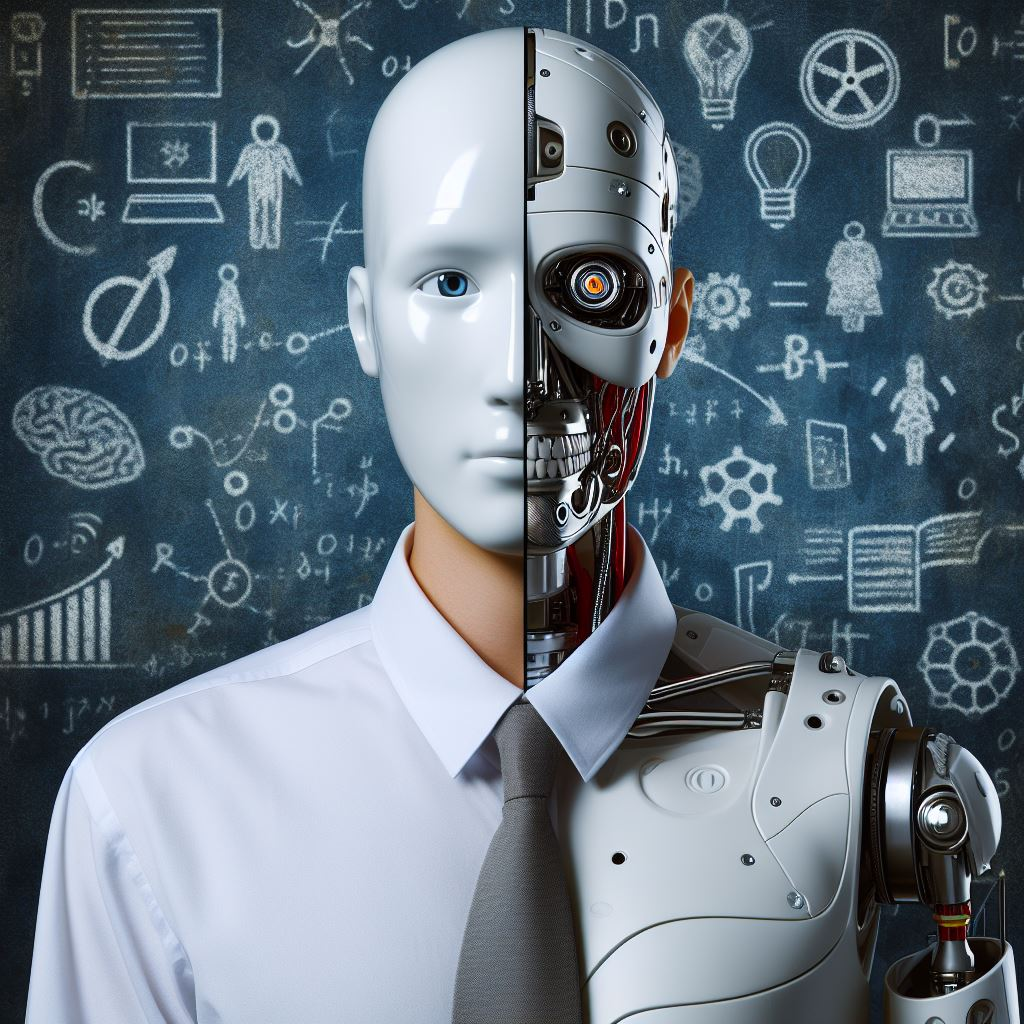Organizations that integrate AI into their customer service strategy today can start enjoying and reaping its benefits before their competitors, optimizing customer journeys and enhancing overall satisfaction while paving the way for a more dynamic and skilled workforce.
Enhancing Efficiency With AI-Driven Customer Service
Automating customer service has led to a revolutionary shift in how businesses connect with and support their customers. Traditional models relying heavily on human interaction are being replaced with AI-powered solutions that automate routine tasks. As a result, the focus is shifting from basic customer service to more comprehensive customer experiences.
Two seismic shifts are driving this transformation:
- Proactive support is now standard. Instead of reactive assistance that addresses concerns as they arise, AI-driven customer service predicts and resolves problems before they escalate. As it analyzes customer data and interaction patterns, the technology identifies potential issues and triggers preemptive actions, enhancing efficiency and significantly improving customer satisfaction.
- Customer experience has become a holistic strategy. Automation isn’t just about answering queries faster; it’s also about creating integrated experiences that seamlessly blend support with a customer’s entire journey. Multi-channel monitoring and real-time analysis allow companies to make personalized recommendations for products and services, meet evolving customer needs, and deliver customized content.
Businesses embracing these trailblazing changes today can position themselves to meet and exceed the modern customer’s expectations and demands.
The Impact of AI on Customer Interaction
Advanced technologies are helping organizations reimagine how to deliver value to their customers. Along with streamlining operations, AI has the power to supercharge productivity and redefine the customer experience.
Orienting AI around the customer experience means rethinking customer service objectives. While shortening hold times, improving first call resolutions, and reducing average handling time will always be essential key performance indicators, AI-driven technologies like ChatGPT and similar natural language processing tools have the potential to overcome multiple friction points at once, improving operational efficiency and enhancing customer satisfaction.
Some of the ways AI is impacting customer interaction include:
- 24/7 availability. Eight out of ten consumers say that getting their issue resolved quickly is the number one factor in a great customer experience. AI enables round-the-clock support, ensuring customers receive help whenever they need it, regardless of time zones or holidays.
- Scalability. AI solutions easily handle a large volume of inquiries simultaneously, allowing businesses to scale their customer service operations without compromising on quality or speed.
- Routine task automation. By automating repetitive tasks like data entry and appointment scheduling, AI frees human agents to focus on more complex customer needs requiring a personal touch. This also helps reduce burnout, as agents get to use their unique skill sets for more satisfying work.
- Multilingual support. AI-powered tools communicate and provide support in multiple languages, breaking down barriers and allowing businesses to cater to a diverse global customer base.
- Answering FAQs. AI makes it possible to quickly and accurately respond to frequently asked questions, providing instant and consistent answers to common customer queries.
- Handling issues in real time. AI technologies address and resolve issues as they happen, offering immediate solutions to customer problems and preventing minor issues from escalating.
- Tailored user experiences. AI uses customer data analyzation to tailor interactions and recommendations to individual preferences, creating more personalized and engaging experiences.
- Creating customer communications. Many businesses use AI to generate personalized emails, messages, and notifications, which ensure their customers receive relevant, timely communications that keep them engaged with their brand.
- Replying to customer reviews. Customers like knowing they’re being heard. AI tools make it possible to automatically respond to customer reviews and feedback, showing a company is committed to continuous improvement and customer satisfaction.
AI-powered support can boost customer satisfaction and retention, providing the fast, convenient, and consistent service that is key to gaining customers who stick around.
Best Ways to Use AI in Customer Service
Chatbots, virtual assistants, and interactive voice response are the most well-known and widely used examples of AI in customer support. Here are some ways your business can use the technology to ensure operational efficiency, innovation, and growth while keeping customers satisfied.
AI Help Desk: Revolutionizing First-Line Support
Customers want quick and accurate answers to their questions. AI systems can handle high volumes of basis queries, freeing up agents to tackle more complex issues. Automating responses to common inquiries and providing instant assistance improves response times and enhances the overall customer experience. As the systems learn and evolve over time, they also increase their ability to resolve customer queries even more effectively.
Generative AI in Customer Service: Personalized Interactions
Gen-AI goes beyond basic automation, generating new and creative solutions based on customer data and past interactions. It can create personalized chat messages, emails, and voice responses tailored to individual needs and preferences, building stronger customer relationships.
Predictive Analytics: Anticipating Customer Needs
By analyzing customer data, AI helps predict future customer behavior and preferences, allowing organizations to tailor their services to meet anticipated needs. For instance, companies in the hospitality and travel industry can use the technology to create high-level trips, detailed daily itineraries, and reservations that match a customer’s hobbies, budgets, and travel style.
Sentiment Analysis: Understanding Customer Emotions
The ability to analyze an integration’s tone and context makes it easier to gauge customer satisfaction, frustration, or confusion. Companies are better equipped to address the immediate concerns of customers while also refining their customer service strategies, ensuring they’re consistently meeting and exceeding customer expectations.
Automated Self-Service Options
As AI-powered self-service options like chatbots and virtual assistants become truly helpful, customers are more willing to use them for troubleshooting, finding information, and getting assistance with transactions. This increases customer autonomy and satisfaction and reduces the load on human support agents, a win-win that helps businesses streamline operations and create more meaningful and satisfying customer experiences.
Want to discover how an AI-driven knowledge management platform can help your organization provide a seamless customer experience across all care channels? Download our white paper, “The Importance of Actionable Customer Knowledge,” to learn more.
Modern Leaders in AI Will Win at Customer Experience
It’s safe to say that AI represents a critical pivot point for modern businesses. Leaders who recognize the technology’s potential and swiftly integrate it into their customer service strategies can position themselves at the forefront of the industry.
As organizations venture further into digital solutions, AI for customer success will continue to reshape how they deliver support and improve customer relationships. From data analysis to personalized engagement and automated support, AI’s potential and applications are a testament to the technology’s transformative potential. It can even be a lifesaver.
KMS Lighthouse client GE Healthcare performs over two billion patient scans annually—that’s about three patients every second! When the medical technology company wanted a way to cut error rates and reduce training time, it turned to KMS Lighthouse for help. The original goal was to lower the provider’s error rate from 1.6 to 0.25 percent. During the year-long period after Lighthouse implementation, the average error rate stood at 0.20 percent, with performance continuing to improve after meeting the goal. New trainee learning curves have been shortened to less than 90 days, down from six months. Customers and patients appreciate the improved efficiency and accuracy, which helps boost GE’s reputation and bottom line.
While AI-driven solutions like KMS Lighthouse will undoubtedly continue to bring efficiency and scale to customer service, it’s vital for businesses to remember the human touch remains an irreplaceable cornerstone of exceptional customer experiences. Moving forward, careful orchestration of technology and human interaction will help organizations create a customer success narrative that embraces technological advancements and retains the essence of genuine and meaningful customer relationships.


